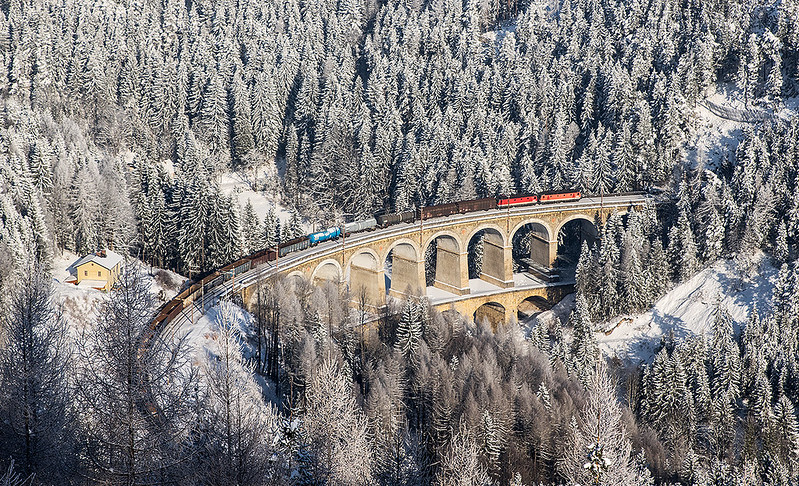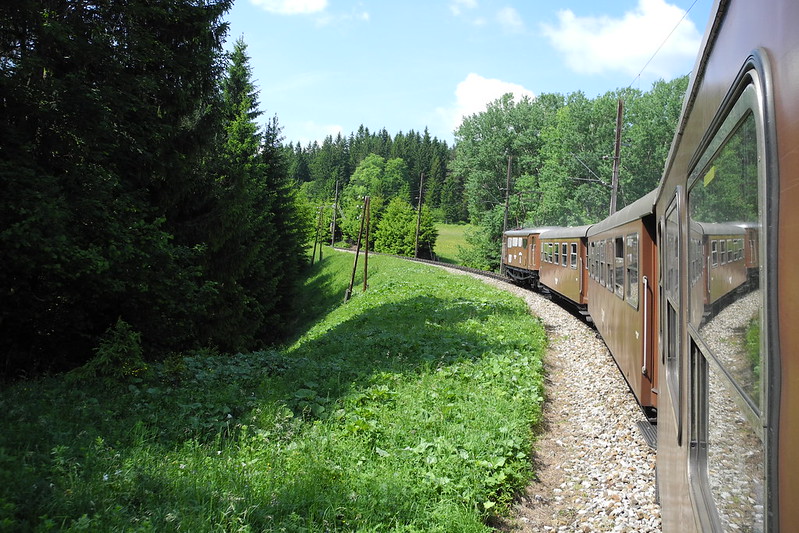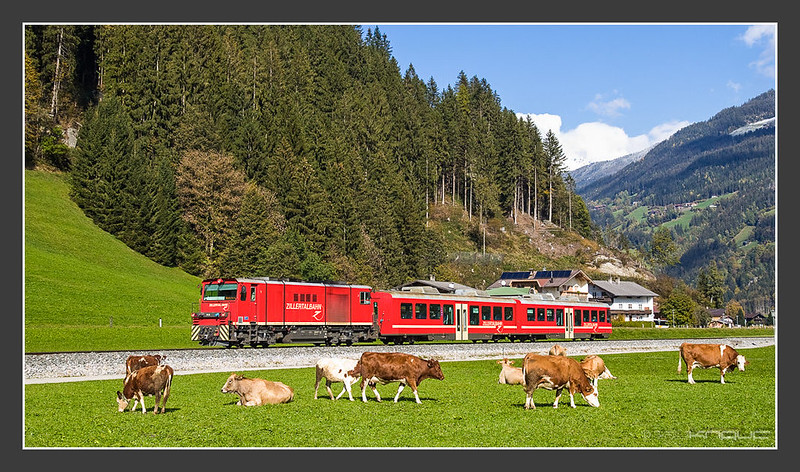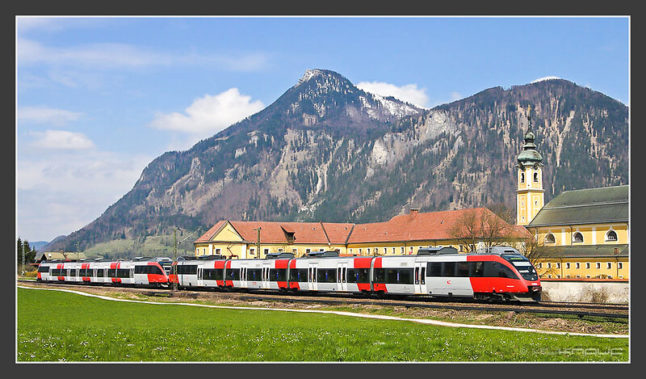
Semmering Railway
Built between 1848 and 1854, the 41-kilometre-long Semmerling line was made a UNESCO World Cultural Heritage site in 1998 and it’s easy to see why: it runs through some jaw-droppingly beautiful scenery between the mountain towns of Semmering and Gloggnitz. It was a huge technical achievement for its time, not least because of the hefty gradient of the line. It was also the first European mountain railway to have a standard gauge track.
You’ll see glorious mountains, obviously, plus huge viaducts – 16 of them, if you’re counting – and 15 tunnels, including one whopping 1,430-metre-long one, and over 100 bridges, as well as plenty of lush forests and deep valleys.

Mariazell Railway
Remember we mentioned gauges above? Well, the Mariazell Railway is a narrow-gauge route – built like that because it was a difficult terrain for trains to cross. Running from St Pölten in Lower Austria to Mariazell in Styria, at 84km-long, it’s Austria’s longest narrow-gauge line.
The mountain section (Bergstrecke) of the line is the most picturesque. Get on at Laubenbachmühle where this starts and enjoy the train’s climb to its peak of 892m above sea level in Gösing where you’ll have gorgeous panoramic views and a glimpse of the 1,893-metre-high Ötscher mountain. Stay on board to see viaducts, reservoirs and deep gorges, in particular glimpses of the wild Erlauf gorge.
Want to really make the most of those views? Book a panorama carriage, which gives you super-comfy seats and unobstructed views of the scenery unfolding as the train trundles along.

Arlberg Railway
The Arlberg raiway is one of Europe’s highest – it climbs to 1,310 metres above sea level at its highest point. It goes up at a fair tilt, too and is one of the steepest passenger lines out there.
Connecting Innsbruck and Bludenz (on the Swiss border), it’s the only east-west mountain line in Austria. Visual delights include the Tyrolean Trisanna Bridge near the hilltop castle Wiesberg, snow-peaked mountains, the 6.6-mile-long Arlberg tunnel, and verdant valleys and forests at the Arlsberg pass – go at sunset/sunrise and look to your right for the best views.
Schafberg Railway
There are – unsurprisingly – a lot of steep railways in Austria and this one is no exception. This is the steepest steam cog-railway in the country and has been running between St Wolfgang in Salzkammergut up to the 1,783-metre Schafberg mountain since 1893.
It’s a gorgeous journey up the mountain with the views getting better and better the higher you go. At the top, you’ll have (weather-permitting) clear views over Salzkammergut’s glittering lakes, as well as the soaring peaks of neighbouring mountain ranges, such as the Höllengebirge.
Tauern Railway
If you’re heading to Venice by train, then this is the most scenic route to take and it’s worth the trip in its own right, too. You’ll pass stunning valleys and gorges as the line winds its way up the High Tauern mountain range of the Central Eastern Alps.
The best views are on the right-hand side of the train when you’re heading in this direction, so try to get a window seat if you can.

Zillertal Railway
There’s always something rather romantic about travelling by steam train and the traditional Zillertal locomotive with its wooden carriages is no exception. It putters gently by the side of the Ziller river along the 32-kilometre stretch between the towns of Jenbach and Mayrhofen, giving you ample opportunity to take in the views as you pass picture-perfect villages and gorgeous valleys surrounded by mountains.
If you’ve got your heart set on the romanticism of steam trains, make sure you check which train you’re getting as the steam-powered engine doesn’t run as frequently as the faster diesel one. If you haven’t pre-booked, get there early to make sure you get a seat as it can get very busy.
zillerbahn.at



 Please whitelist us to continue reading.
Please whitelist us to continue reading.
Member comments